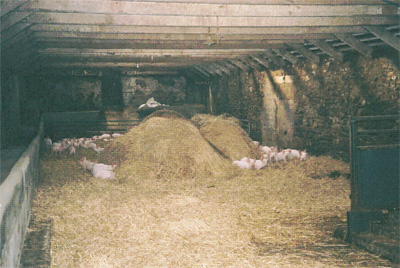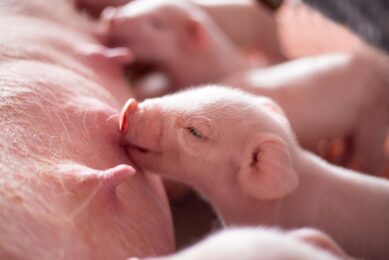Taking the ‘stress’ out of weaning

The prevalence of E. coli infections after weaning fell dramatically in the UK in the late 1990s, even when PMWS was soaring to its heights – what was happening?
We had just had the changes in husbandry from the banning of sow stalls and the introduction of straw-based systems, which also led to the increased use of straw yards for weaning piglets. When PMWS hit, greater care was taken to reduce the stress of weaning and thereby reduce the initial damaging effects of porcine circovirus (PCV2) in non-immune herds. This led to many farms moving the weaning age towards 28 days from 21 days, before the EU regulations came in 2003.
©
©
©
©
©
In some units, where they used straw for nurseries, the nursery mortality (4-10 weeks of age) was reduced to below 1% (see Photo 1) even in the presence of PCV2 infections. Even in the cold north of Great Britain (GB), pigs would thrive in airy barns, providing there was enough straw to keep them warm, protected and unstressed.
©
The shift to 4-week weaning has also made an impact, as the pigs are older and stronger and more able to withstand the stresses of weaning. The normal check associated with weaning lasts for about one week instead of two when they were weaned at 3 weeks of age.
©
The addition of zinc oxide (Pigzin® – DSM; and ZincoTec® – Provimi) to provide 2500ppm of zinc in feed has also made an outstanding difference to the performance of pigs post weaning over the last 15-20 years. In a recent review of 10 trials (see Figure 2) there were reductions in mortality and diarrhoea associated with the effects on post-weaning E. coli infections, which resulted in dramatic dose-related improvements in growth rate seen in the post-weaning period. Therapeutic levels above 1000ppm were required for consistent performance, with the optimum being achieved at 2500ppm (average 25.2% improvement in growth).
©
©
The mode of action of zinc oxide is still a matter of debate but recent work from Denmark (Aarestrup & Hasman, 2004) showed that zinc, as the chloride, does have an antimicrobial effect and inhibits E. coli in an acid environment (see Figure 3) at a lower concentration, in comparison with an earlier study carried out at pH 7.2 using zinc acetate (Soderberg and others, 1990).
©
©
There have been some concerns over the use of zinc in feed from an environmental pollution perspective in some countries but the use of pure, European pharmaceutical-grade materials, rather than greyish substitutes, means that there are controlled, low levels of heavy metals such as cadmium and lead. Coupled with the limited duration of use around the weaning period, it means that there are relatively low and acceptable concentrations of zinc in the overall farm manure output, lower than normal human waste, according to the Danes.
©
Controlling stress is very important for successful weaning. Attention to temperature, comfort, hygiene, age of pig and control of E. coli gut colonisation is vital. Good control can also reduce a farmer’s stress too.
©











